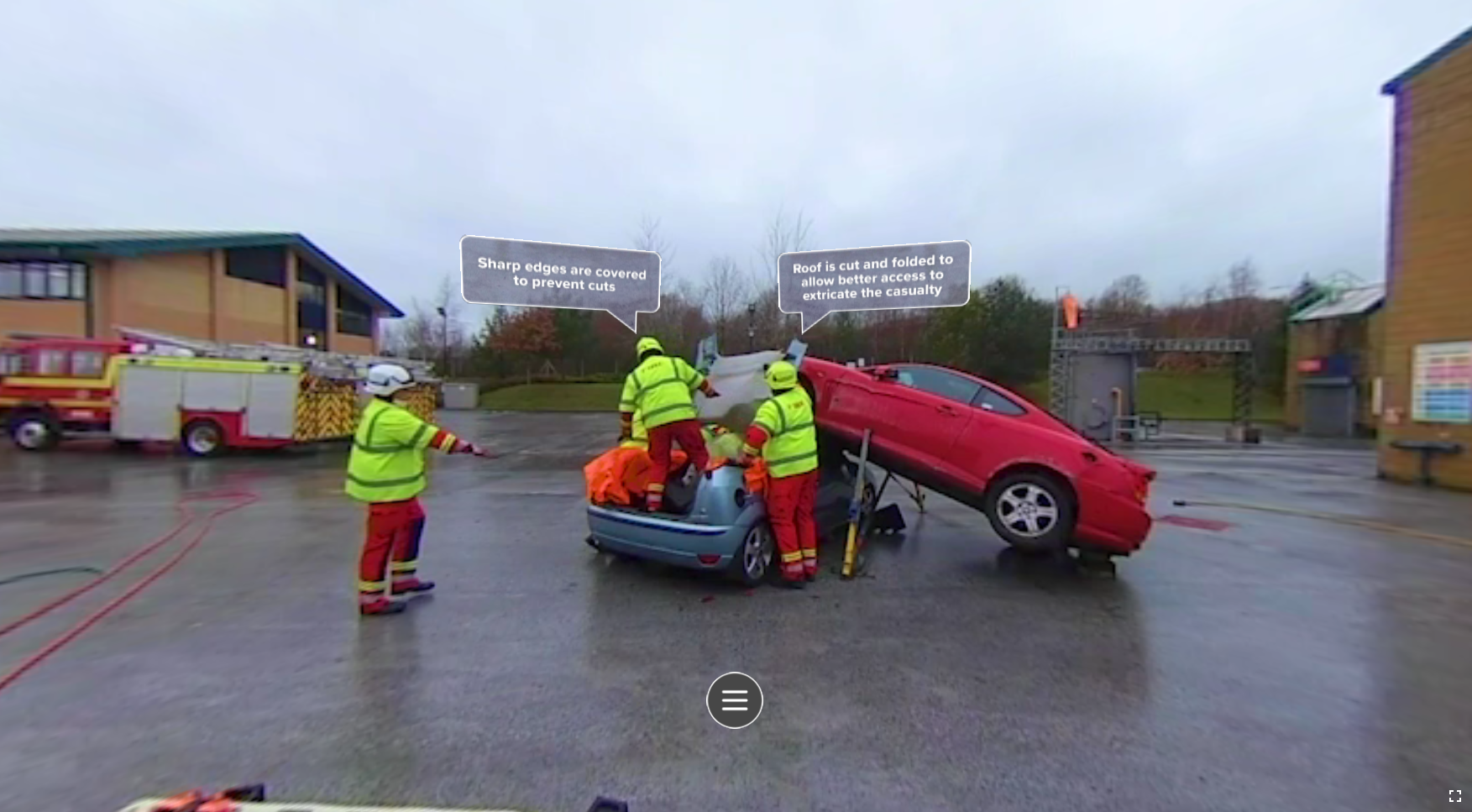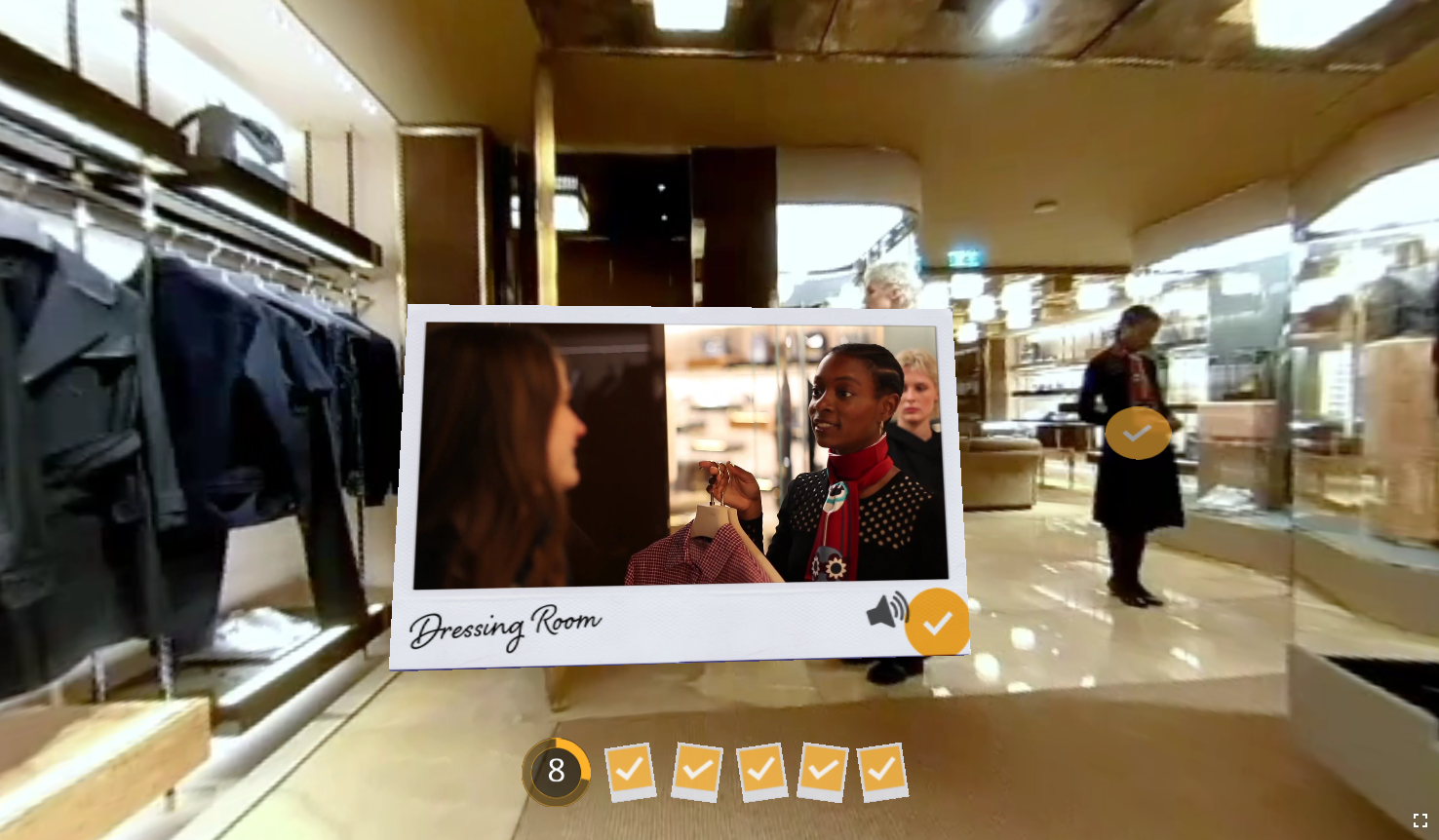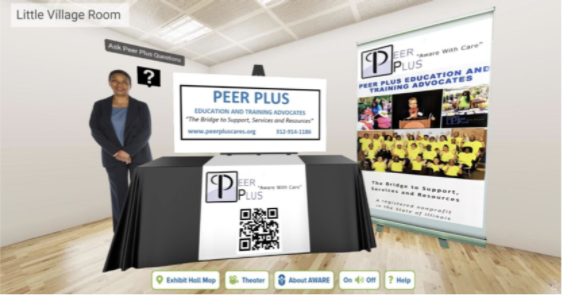VR Training To Mitigate Risks And Boost User Engagement
The stakes are high when it comes to workplace safety, anti-terrorism training, and threat identification. These situations are also tough to realistically replicate for training purposes. When mistakes made in real life could be costly or dangerous, virtual reality training is the perfect alternative. VR works well for many types of safety training, such as:
- Office, warehouse, or construction site safety
- Security & situational awareness
- Active shooter training
- First responder training
- Environmental threats
- Disaster planning
Two Very Different Industries That Benefit From An Immersive Learning Strategy
1. First Responder Training
In a South Wales Fire & Rescue training exercise developed by Video Interact, firefighters respond to the scene of a collision, where they extract and rescue a victim.

Whether on a desktop or mobile device, the viewer can interact with filmed images of people, objects and the environment from multiple angles. Features include on-screen augments and question sets, scoring, a home button, expert testimonies and action shots captured on GoPros worn by the team as they work on the rescue.
Why It Works
- Immersive fire safety training can be delivered over and over without causing any additional wear and tear on personal protective equipment (PPE) and response equipment.
- Virtual training means that all equipment and vehicles remain available in the event of an emergency.
- A simulated emergency situation allows firefighters to test their abilities without incurring any risk.
- 360-degree video allows first responders to see the situation from all angles and the highly visual nature encourages greater retention compared to text-based training manuals.
2. Security: Threat Spotting
Luxury retailer Fendi hired Video Interact to engage and train 1,800 international in-store sales staff in vital health, safety and security information to reduce in-store theft, among other threats. The training needed to be mobile-friendly and delivered in a way that sales staff would find both engaging and informative. Part of the program included an interactive 360VR module focusing on spotting security risks inside stores. Because of the high retail value of Fendi’s products, reducing theft has a huge impact on their bottom line.
Why It Works
All elements were shot on location in their London flagship store to create learning the staff would recognize and relate to. Embedding the immersive video into a mobile learning module allowed staff to complete the exercise on their mobile devices, without needing a desktop computer or VR headset.
Showing all the security lapses in virtual reality enabled staff to encounter scenarios without putting actual product at risk. Armed with this knowledge, they are able to prevent these situations from happening in the first place in their stores.

Fendi achieved a 55% theft reduction and 400% ROI from the interactive health, safety, and security training. As well as being extremely effective the course was popular with the staff, reaching 80% of its target audience within 6 months of launch (the highest number possible given the often transient nature of the staff).
VR For Virtual Events
Until recently, the adoption of remote technology for events was slow. After all, the in-person engagement and activities are what make an event special, right? However, the abrupt cancellation of nearly all live tradeshows and conferences in 2020 due to the Covid-19 pandemic was a massive disruption.
Event organizers HAD to find alternatives, despite the fact that face-to-face interactions are widely believed to be vital to the sales funnel. Most business professionals across industries, even the younger generations, tend to prefer attending live events to virtual ones. However, with the right technology, it’s possible for virtual experiences to deliver the same value as physical ones—if not more!
So how can you create an engaging virtual event? Here’s one example.
Virtual Health Fair
The Center for Information and Study on Clinical Research Participation (CISCRP) hosts a series of events called AWARE for All—free clinical research education health fairs that include informational exhibits featuring community groups, health associations research centers, local physician and patient speakers, as well as receptions to honor clinical research participants. AWARE for All events are hosted several times each year in different cities around the country.
To replace their in-person events canceled by the COVID-19 pandemic, CISCRP hired an agency, Illumina Interactive, to create an immersive, 360° virtual reality health fair experience.
Illumina Interactive used CenarioVR®, a virtual reality course authoring application to create an engaging, interactive VR health fair where participants can visit over 30 virtual sponsor and exhibitor booths, learn about each exhibitor via posters, text, and short introductory videos, and visit the CISCRP theater to view a series of short videos about clinical research trials.

Why It Works
- By creating an immersive learning experience, the event and educational content feels customized to each visitor and remains top-of mind.
- Attendees can “walk” around at their own pace. Background audio and sound effects add to the immersive effect.
- The virtual nature of the experience means it can remain live on CISCRP’s site, which provides the opportunity for continued engagement past the event date. Visitors can come back to a booth at any time to review resources and watch videos at their own pace. The potential for continued leads is a huge value-add for exhibitors.
- A virtual experience still allows for interactions like videos, links to inquiry forms or calendar invites to schedule meetings with sales reps, and more.
Conclusion
Download the eBook 5 Popular Types Of Learning To Build In VR - And Why They Work! to explore the many applications for VR training in your safety training and virtual events.
Editor's note: This article was originally published on eLearningIndustry.com on May 27, 2021.

%20Works%20For%20Safety%20Training%20And%20Virtual%20Events_Blog%20Featured%20Image%20800x500.png)






